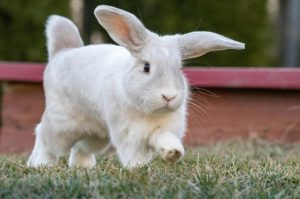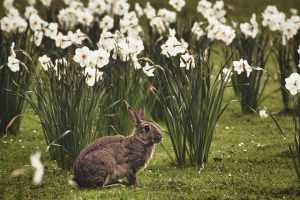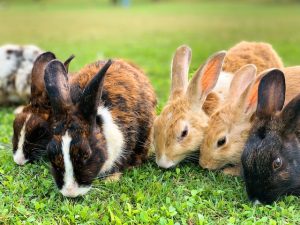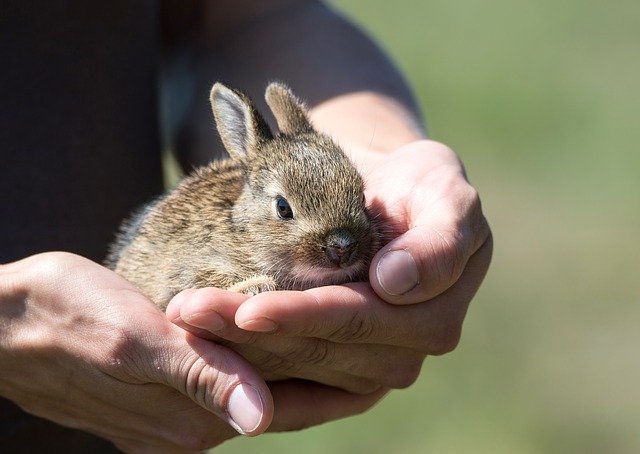
Rabbits are from the family Lagamorpha. There are two subfamilies within the group, Hares and Rabbits. You will often find the wild rabbits living in the hedgerows and within the open fields. Domesticated rabbits will have a home within a rabbit hutch. They are raised by the children and the adults within their human family. Their food requirements, their nesting habits and even their breeding is controlled by their human family.
Within each subfamily, you will find the different breeds of the rabbit. The one basic thing you can count on is that the breeding cycle remains ultimately the same, in both the wild and the domesticated. A rabbit’s breeding cycle remains the same whether they live with humans or out in the wild.
Age and Mating
Unlike many other animals, a rabbit matures early in life and can begin the reproducing cycles very early on. The doe, (female rabbit) will begin to breed around 3 to 5 months. The bucks (male rabbits) begin roughly one month later in life.
The female rabbit does not ovulate until she has mated with a buck. A female rabbit’s reproductive system is much different than many other mammals. Facts are varied here, many vets will state that within 10 to 13 hours after mating, the female will ovulate and produce an egg. Other vets will say that the ovulation process happens during the act of intercourse itself.
There are other signs that show if a female rabbit is on the stage. When her organ, vulva, is reddish purple and moist, is the optimum time to pair the rabbits together. The best way to breed your domesticated rabbits is to take the female rabbit to the male rabbit’s hutch. Leave them together for 30 minutes. If the female is receptive, intercourse will take place shortly after the two are together.
For those that are specifically raising rabbits for show purposes, you will likely want to limit how many times your rabbit is mated with the male. Those that raise rabbits for the purpose of meat, a female rabbit can be mated again after a two week time span of kindling. Of course, if the female is still nursing a large litter, you may need to wait longer. When the purpose is to raise rabbits for meat, it is more beneficial to get large litters. Breeding too soon can have an impact on how her reproductive organs perform. Too soon can cause very small litters.
Rabbits are able to have 60 babies per year. They can fully wean and raise them as expected. If bred too soon, the total will be far less.
When a female rabbit is in heat, the signs will be obvious. She may rub her chin on inanimate objects, such as the dishes or be acting restless. She will also show signs of wanting to be with other rabbits, to be sociable.
It is important to bring the doe to the male. Not because he is the male, but because the female is highly territorial. When other rabbits are brought to her cage, there could be animosity and aggression shown.
Many breeders will allow the female rabbit to remain with the male a little longer to ensure that intercourse has taken place. The female will do what is called presenting herself. This is when she lays on her stomach and lifts her tail.
You may have times when a female seems to refuse to want to mate with a buck. Two options that you can try for this situation would be:
- Move her to a hutch with a different male rabbit. There may be something about the first male that she senses or she just does not like him.
- The female may need to be held in order for the buck to do his part. This will involve placing one hand under her abdomen and slightly lifting her back end up, with the other hand, moving her tail up or out of the way. The male will then be able to perform his portion of the mating process.
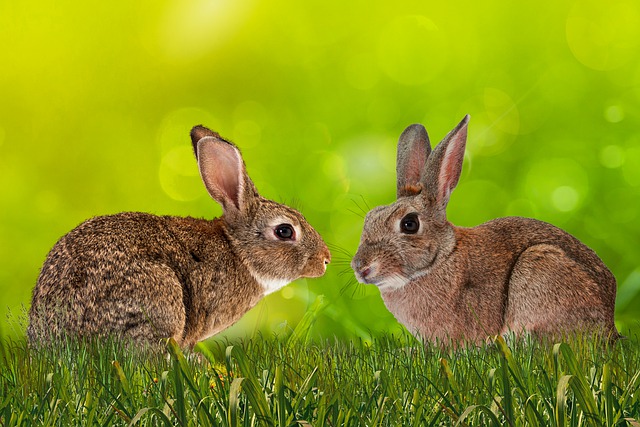
Receptivity
A female rabbit is receptive to mating 14 out of 16 days. This could be the reason humans say ‘mating like rabbits’.
Gestation
Female rabbits and the gestation period are much different than most other mammals also. The usual period of time is 31 to 33 days. Within two weeks you should be able to feel small lumps in the female’s abdomen area. This time will progress quickly. At the four week mark, it is helpful if you place extra hay and bedding material in the doe’s cage.
She will prepare the nest when she enters the nesting stage. There is also another action the rabbit will partake in when she feels the time is coming to give birth. As she is nesting, she will pull clumps of fur out of herself. Specifically in the mammary gland area and the forelimb area. This pulled out fur is then used when creating the nest.
Sterile PostPartum Mating
There will be times when sterile mating does occur. An infertile mating can happen due to the excitement of males, or other does mounting. This can and often will result in a pseudo pregnancy. A pseudo pregnancy is a pregnancy that is not actually there. As related to the human mammal, this would be considered a hysterical pregnancy. This pseudopregnancy will last 15 to 17 days.
This condition will spontaneously correct itself, however, it could also then result in depressed fertility. During a pseudopregnancy, the female rabbit will not mate with any male rabbit. There has been no determination in regards to what causes this condition. What is thought to be a cause is infertile mating, or being mounted by another rabbit.
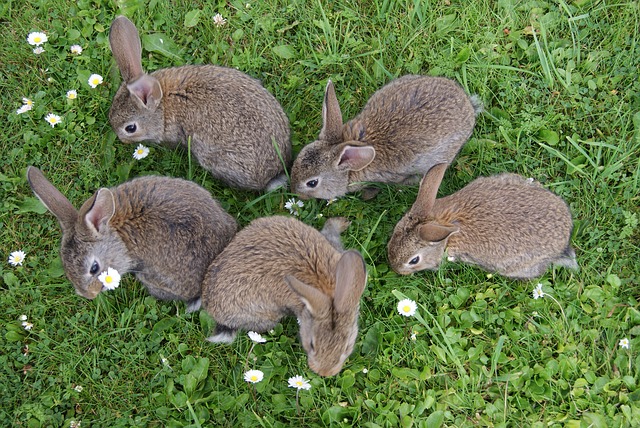
Breeding
For those that specifically breed rabbits, breeding should happen set on 7 day intervals. This works best for keeping the records that are necessary. In the commercial world, breeders tend to breed within 14 to 21 days after they have given birth. This is not recommended however, as it could cause problems and low fertility, smaller batches of kindling. Over time and with experience you may be able to begin the breeding cycle sooner. Female rabbits do burn out over time, which means that the more you breed her, the faster she will burn out.
You should be responsible and check on the health of both the female rabbit and the males. If the female is still nursing her young, this can reduce the fertility, smaller broods or even a higher rate of death in the young.
Rabbit breeders are able to have more performance from the male rabbits. A male rabbit is capable of performing more than once a day, as long as he is allowed to rest in between. The average breeder will pair a buck with up to 15 does. The smarter ratio is one male to 5 females, or even 1 to 2. This ensures stronger sperm counts and fertility in the bucks.
To ensure the breed line, be sure to breed the same breed with one of the same. This ensures the Pedigree remains clean.
Bucks, too, will experience issues when it is time for the mating. One such issue is the weather. If the outdoor temperature is above 85* on consecutive days, these can lead to lower sperm counts and lower fertility rates in the males. The younger bucks have a higher tolerance, but can still be affected. The older bucks could become infertile for up to 90 days.
Many breeders will have a location where the rabbits can be placed and the breeder has industrial fans running to keep the temperature down. The high temps will affect the breeders financially. Especially if this is how they support their own family. Think of farmers with corn, soybeans, potatoes and all the other vegetables, when there is a drought, the production is lower and they make less money. It is the same for the breeders.
Record Keeping for Breeders
When you raise rabbits specifically for breeding, it is necessary to keep perfect records of when breeding happens. This will allow you to help prepare for the nesting period, be aware of when to expect the kindling to arrive, and also so that you are not forcing the female into breeding too quickly.
Just like all mammals, she needs time to rest, time to feed her young and then she will be ready for action again. Without those detailed records, you will not have an accurate count of the days for gestation. This in itself can lead to issues. With the younger does, they may need assistance in the birthing process. Your veterinarian is the only one that is trained enough to assist if she needs the help.



